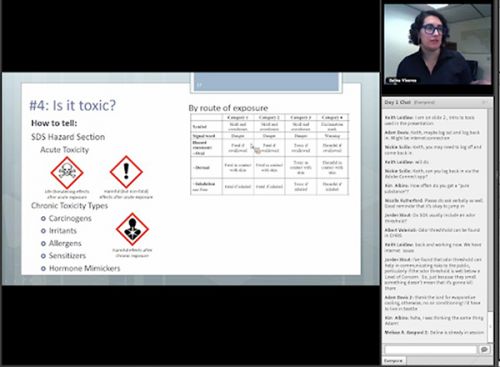Virtual Science of Chemical Releases (SOCR) Course
SEPTEMBER 21, 2020 — Did you know that depending on the wind, a heavy gas could follow the terrain rather than be carried by the wind? This is one bit of critical knowledge that was shared with responders during our week of online Science of Chemical Releases (SOCR) training.
Like many agencies, we here at OR&R are having to move things to a virtual setting to accomplish our goals. One of our main goals is to train responders on the science behind oil and chemical spills. The pilot remote Science of Chemical Releases class, traditionally taught over 4 days in-person, was taught virtually for the first time during the week of August 31-September 4. The team of instructors including Dalina Thrift-Viveros, Adam Davis, Charlie Henry, Al Valerioti, Bob Bradley, Savannah Turner and facilitators, Kim Albins, and NIckie Scillo, worked together since May to redesign and develop the training for the virtual setting. We had over thirty students from the U.S. Coast Guard, industry, NOAA, and the Canadian Coast Guard that were selected to take the class and give us feedback so that we can continue to improve the class.
Students learned what questions to ask during the initial phase of a chemical spill, the various hazards chemicals can pose, and how to find chemicals (and their hazards) in the CAMEO chemicals database. They learned how models like ALOHA and MARPLOT are used to inform chemical spills and the limitations of those models. They also learned about the way to monitor chemical spills and protection strategies to mitigate impact to responders and the public. This was all brought to the students in the context of real life case studies to impress upon the students the complicated nature and seriousness of dealing with chemical spills. The instructor team also learned valuable lessons on how to improve the course in the virtual setting while wearing the brightest of aloha shirts possible. There is no doubt that it was a successful week for both students and instructors alike. A hui hou.
For further information, contact Kimberly.Albins@noaa.gov.
 An official website of the United States government.
An official website of the United States government.

